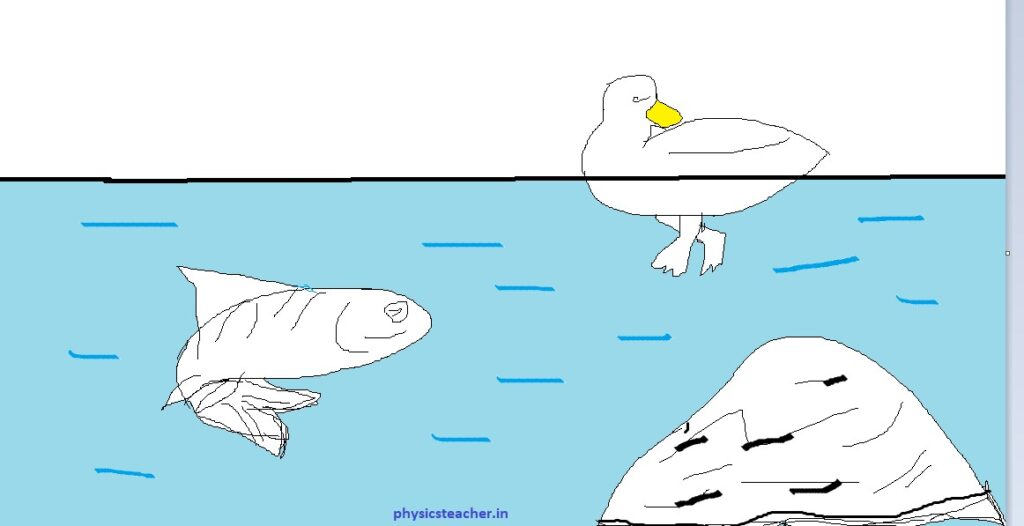Weight Versus Buoyant Force – sinking, floating, & Buoying up
An object in a fluid will sink if the object’s weight is greater than the buoyant force (the weight of the fluid that the object displaces). An object floats only when the buoyant force on the object is equal to the object’s weight.
An object is buoyed up until the part of the object underwater displaces an amount of water that equals the object’s entire weight. Thus, an ice cube pops to the surface when it is pushed to the bottom of a glass of water.
We will use an example as described in figure 1 to understand the causes of sinking, floating & buoying up and identify the differences among them.

Sinking
Say, the rock in Figure 1 weighs 95 N and it displaces 7 L of water.
Archimedes’ principle states that the buoyant force is equal to the weight of the displaced water and in this case, the weight of the displaced water(7 liters) will be about 70 N.
The rock’s weight is greater than the buoyant force. So, the rock sinks.
Conclusion: An object in a fluid will sink if the object’s weight is greater than the buoyant force (the weight of the fluid that the object displaces).
Floating
Say, the fish in Figure 1 weighs 12 N & it displaces a volume of water that weighs 12 N.
Because the fish’s weight is equal to the buoyant force, the fish floats in the water.
In fact, the fish is suspended in the water as it floats.
Now, look at the duck. Say, the duck weighs 9 N.
The duck floats.
So, the buoyant force on the duck must equal 9 N.
But only part of the duck has to be below the surface to displace 9 N of water.
So, the duck floats on the surface of the water, with only a part of its body under water.
Conclusion: An object floats only when the buoyant force on the object is equal to the object’s weight.
Buoying Up
If the duck in our example dives underwater, the duck will displace more than 9 N of water. (because we have seen that a part of it displaces a volume of water that weighs 9 N). So, if the duck dives underwater the buoyant force on the duck will be greater than the duck’s weight.
When the buoyant force on the duck is greater than the duck’s weight, the duck is buoyed up (pushed up).
Conclusion: An object is buoyed up until the part of the object underwater displaces an amount of water that equals the object’s entire weight. Thus, an ice cube pops to the surface when it is pushed to the bottom of a glass of water.

